GBA: building one of the world’s most dynamic growth engines
- Viewed as a single economic entity, the region’s total GDP in 2023 exceeded HK$14.4 trillion, surpassing that of South Korea and Australia, and on par with Italy.
- By Chen Xiani, Zhuo Yingzi, Wang Fengping, Liu Jiahui, Peng Jingzhi, Cai Jingying, Wu Xuanrou and Wang Yongxing
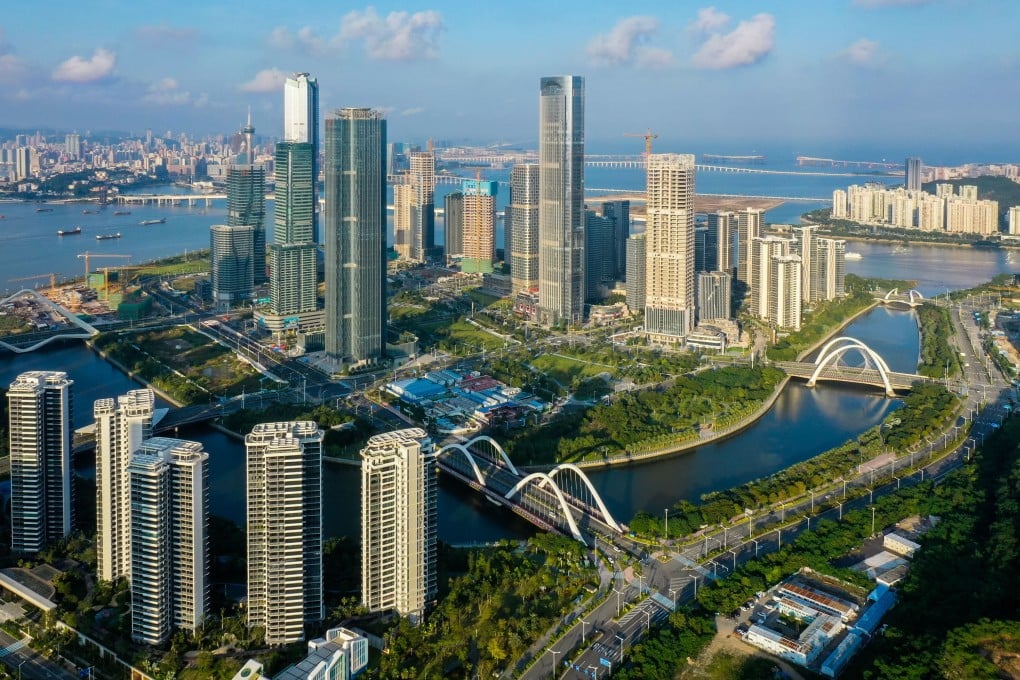
[The content of this article has been produced by our advertising partner.]
The Guangdong-Hong Kong-Macau Greater Bay Area (GBA) comprises the two Special Administrative Regions of Hong Kong and Macau, as well as the nine municipalities of Guangzhou, Shenzhen, Zhuhai, Foshan, Huizhou, Dongguan, Zhongshan, Jiangmen, and Zhaoqing in Guangdong province. Spanning around 56,000 sq km, it is home to a population of around 80 million.
The GBA’s construction holds great significance for the country’s implementation of innovation-driven development and steadfast commitment to reform and opening up. The objectives are to further deepen cooperation between Guangdong, Hong Kong and Macau, fully leverage the comprehensive advantages of the three regions, facilitate in-depth integration within the GBA and promote coordinated regional economic development, with a view to developing an international first-class bay area ideal for living, working and travelling.
By the end of 2023, the total GDP of the GBA had exceeded HK$14.4 trillion, solidifying its position as the most promising growth engine in the world. With less than 0.6 per cent of the country’s total area, the GBA generated about 12 per cent of China’s GDP. On a global scale, if the GBA is viewed as a single economic entity, its GDP not only surpasses that of South Korea and Australia but also constantly keeps up with that of Italy.
The GBA boasts a complete upstream and downstream industrial chain, with eight industrial clusters valued at over one trillion yuan, and a further 10 worth over 100 billion yuan. Since 2019, the GBA has transformed from a world factory into a global innovation hub, and shifted its focus from manufacturing to cutting-edge R&D, and from labour-intensive products to hi-tech and modern service industries, showcasing the region’s economic vitality and promising development prospects.
With the accelerated integration of the GBA, the “one-hour living circle” has been realised through a convenient road network and highly efficient customs measures, which have greatly facilitated the work and life of Hong Kong and Macau residents.
In recent years, China has issued a series of supporting policies and initiatives on major cooperation platforms in the GBA, such as Hengqin, Qianhai, Nansha and Hetao. In terms of strategic position, these four platforms have distinctive focuses and distinct features. Hengqin focuses on promoting the moderately diversified economic development of Macau, and Qianhai centres on the modern service sector – a prominent industry in Hong Kong. Nansha focuses on two key points: “comprehensive cooperation between Guangdong, Hong Kong and Macau” and a “global perspective”, while Hetao centres on promoting international scientific and technological innovation, together with Hong Kong.
The Global Innovation Index (GII) 2023 published by the World Intellectual Property Organization ranked the Shenzhen-Hong Kong-Guangzhou science and technology cluster second for four consecutive years.
Hong Kong: towards a more competitive cosmopolitan city
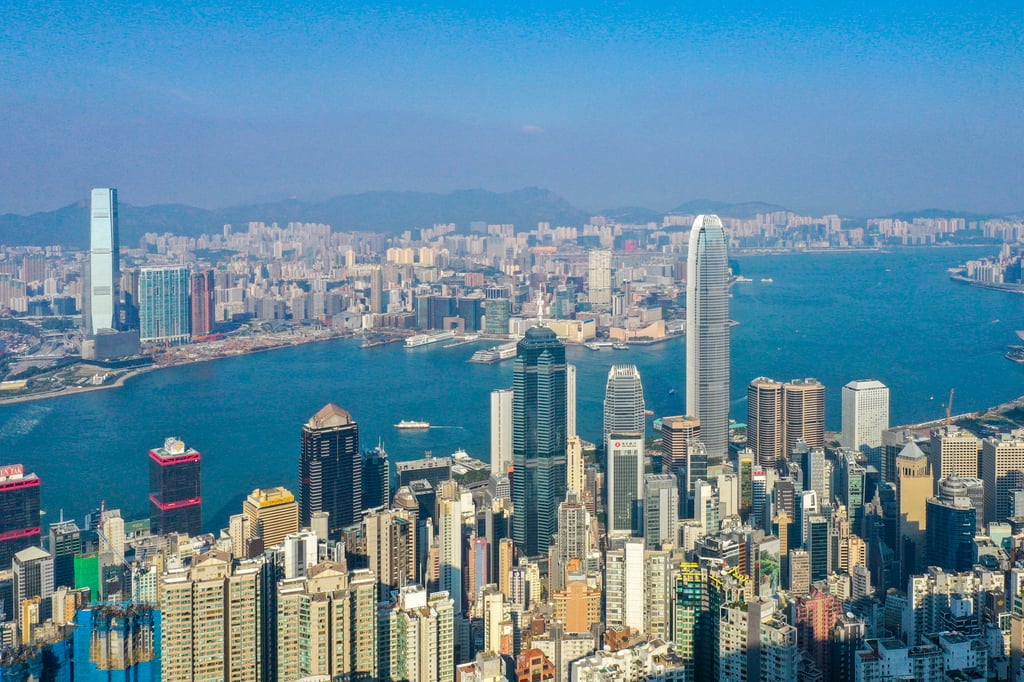
As one of the four major cities in the GBA and known as an international financial, shipping, trading and aviation hub, Hong Kong is forging ahead to become a more competitive cosmopolitan city.
-
GDP in 2023: ↑3.2 per cent
-
Set 150 KPIs for better governance and 73 are new
-
Established the New Industrialisation Development Centre
-
Launched a 10-billion-yuan New Industrialisation Acceleration Scheme
-
Expanded the Top Talent Pass Scheme to 184 universities
-
Stock stamp duty: ↓0.1 per cent
-
Public housing demand in the next decade: 308,000 units
-
Land available for the construction of 410,000 units
Macau: building a cultural exchange and cooperation base
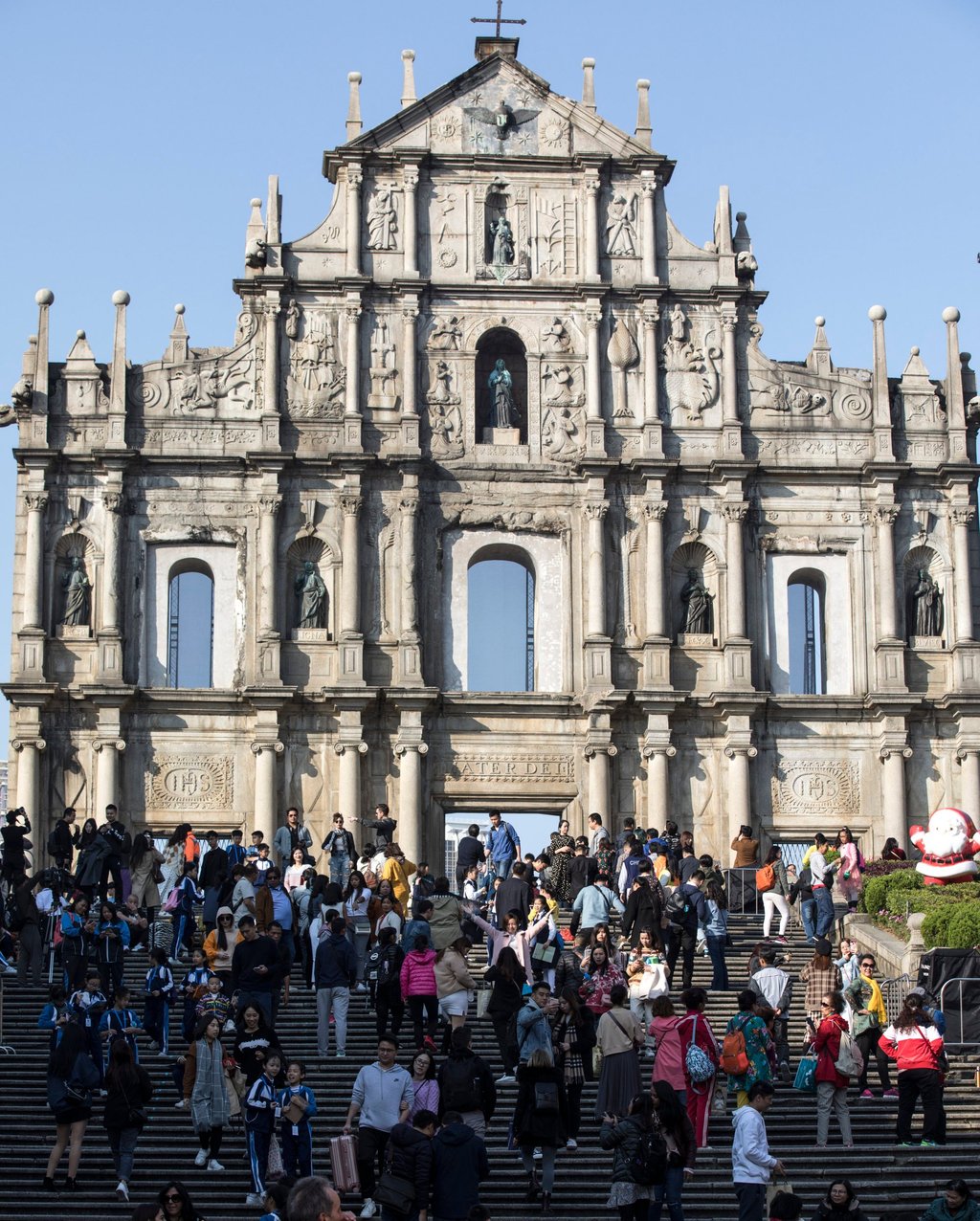
As one of the core engines driving the development of the GBA, Macau will position itself as a cultural exchange and cooperation base, with Chinese culture occupying the mainstream, coexisting alongside different world cultures. By leveraging its own advantages, Macau will actively integrate itself into the overall development of the country.
-
GDP in 2023: ↑80.5 per cent
-
GDP in H1 2023: ↑71.5 per cent year on year, recovering to 71 per cent of 2019 GDP volume
-
Inbound tourists from January to August 2023: ↑3.6 times, making Macau the top destination for Chinese mainland travellers for outbound travel
-
Implemented the “1+4” appropriate diversification development strategy
Guangzhou: strengthening the core

As the core growth driver in the GBA, Guangzhou has taken on a new mission to boost the development of Nansha, fully enhancing its core engine function for regional development.
-
GDP in 2023: over 3 trillion yuan
-
Total retail sales of consumer goods, and total import-export volume: exceeding 1 trillion yuan for three consecutive years
-
Fixed asset investment: over 860 billion yuan
-
Added value of strategic emerging industries: accounting for over 30 per cent of GDP
-
Hi-tech enterprises: ↑13,000
-
Hi-tech SMEs: ↑21,000
-
Global unicorn companies: 22 listed, ranking first in the country
-
Output value of six advanced manufacturing clusters: exceeding 100 billion yuan
-
Auto production: ranking first in the country for many consecutive years
-
New foreign-funded enterprises in 2023: over 6,600, ↑90 per cent
Shenzhen: world-leading advanced manufacturing centre
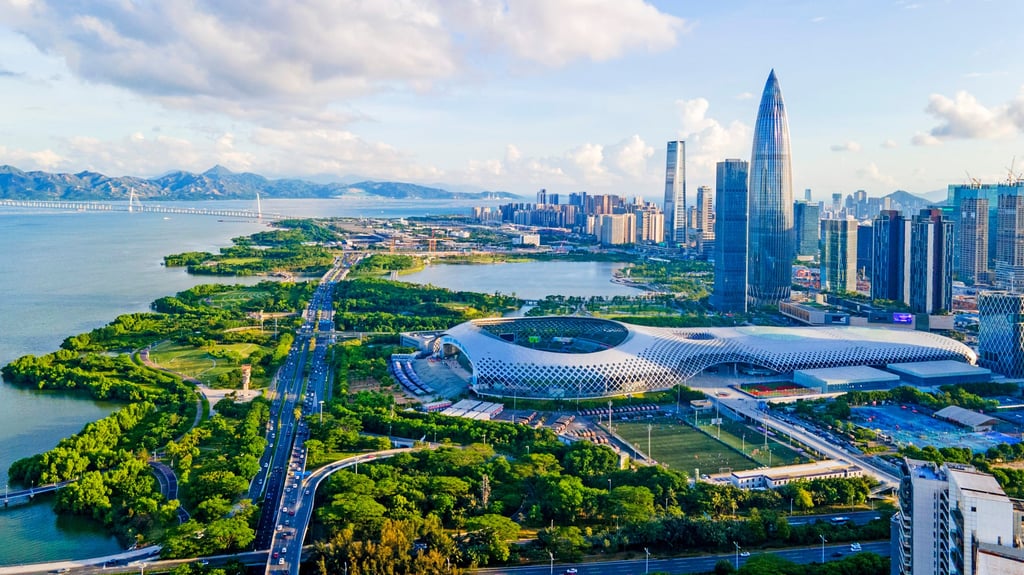
Shenzhen has always regarded industrial development as the backbone of its urbanisation strategy, focusing on the building of a globally influential economic hub and a world-leading advanced manufacturing centre
-
GDP in 2023: 3.46 trillion yuan, ↑6 per cent
-
Fixed asset investment: about 1 trillion yuan, ↑11 per cent
-
Industrial investment: ↑43 per cent
-
Total import-export volume: 3.87 trillion yuan, ↑5.9 per cent
-
Exports: ↑12.5 per cent, topping the country for 31 consecutive years
-
Total output value and added value of industrial enterprises (above the designated size) ranked first nationwide for two consecutive years
-
R&D expenditure: 188.05 billion yuan, ↑11.8 per cent
-
Added value of strategic emerging industries: ↑8.8 per cent, contributing 41.9 per cent to regional GDP
-
Leading in PCT international patent applications for 20 consecutive years
-
The Shenzhen-Hong Kong-Guangzhou science and technology cluster ranked second globally for four consecutive years
Foshan: manufacturing as a pillar of growth
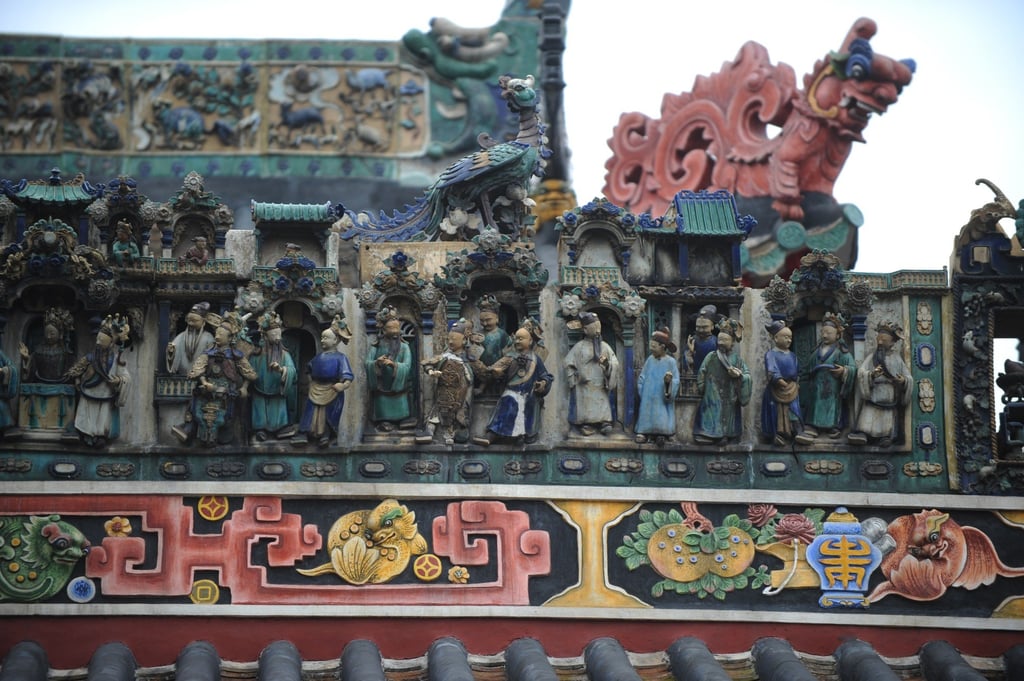
Foshan has not only steadfastly upheld the manufacturing industry as the pillar but also made great strides, contributing a lot to the province’s industrial development.
-
GDP in 2023: 1.3276 trillion yuan, ↑5 per cent, ranking third in Guangdong
-
Became the second city in Guangdong with the total output value of industrial enterprises above the designated size, exceeding 3 trillion yuan
-
Technological upgrading investment: 89.2 billion yuan, ↑33.7 per cent, ranking first in the province
-
Industrial land supply: 1,120 hectares, ranking first in the province for two consecutive years
-
National hi-tech enterprises: over 10,000
-
Industrial enterprises above the designated size: over 10,000 (expected)
-
Total output value of industrial enterprises above the designated size in 2023: 630.1 billion yuan, ↑6.6 per cent
-
Total contracted investment: over 400 billion yuan
Dongguan: boosting manufacturing

Dongguan is committed to laying a solid foundation and pursuing long-term development, striving to strengthen the development of the manufacturing sector.
-
Business entities in 2023: ↑310,000, totalling 1.7 million, maintaining its top position in the province for 12 consecutive years
-
New large-scale industrial enterprises: ↑1,797, ranking first in the province
-
New digital transformation enterprises: ↑1,216, first in the province
-
A-share listed companies: ↑58, first in the province
-
National-level “little giant” enterprises: ↑170, first in the province
-
Major industrial chain projects: 11 worth over 3 billion yuan
-
Contracted investment: over 360 billion yuan
-
GDP in 2023: ↑2.6 per cent
Zhuhai: creating opportunities

Zhuhai will focus on the integration of the world-class city cluster in the GBA and the urban circle on the west bank of the Pearl River Estuary, creating opportunities through external cooperation and internal expansion while gaining a foothold in the west bank of the Pearl River Estuary, the western Guangdong and even the greater southwestern region.
-
GDP in 2023: 423.32 billion yuan, ↑3.8 per cent
-
Per capita disposable income: ↑3.2 per cent
-
General public budget revenue: 48.24 billion yuan, ↑10.3 per cent, the growth ranking first in the Pearl River Delta
-
Total output value of industrial enterprises above the designated size: over 600 billion yuan, ↑5.7 per cent
-
Zhuhai ports: 164 million entries and exits
-
Zhuhai Airport: 11.46 million passenger throughput
-
Daily vehicles passing the Hong Kong-Zhuhai-Macau Bridge Zhuhai Port: exceeding 170,000 for the first time
-
Signed agreements: 23
-
Contracted investment: 73.05 billion yuan
Huizhou: a happier first-class city

Huizhou aims to become a new growth engine of high-quality development in Guangdong and accelerate the building of a first-class city in the country that fosters greater happiness.
-
GDP in 2023: 563.97 billion yuan, ↑5.6 per cent, year on year
-
Total output value of industrial enterprises above the designated size: 251.35 billion yuan, ↑5.2 per cent, year on year
-
Fixed asset investment: ↑5.3 per cent, year on year
-
Total retail sales of consumer goods: 214.49 billion yuan, ↑4.9 per cent, year on year
-
Foreign trade volume: 340.94 billion yuan, ↑10.3 per cent, year on year
-
Per capita disposable income: 46,637 yuan, ↑3.9 per cent, year on year
Zhaoqing: boosting connectivity

As the development of the GBA is steadily advancing, Zhaoqing is evolving from a city in the Pearl River Delta to an important transport hub in the world-class bay area.
-
GDP in 2023: 279.25 billion yuan, ↑3.7 per cent, year on year
-
Total output value of industrial enterprises above the designated size: ↑4.3 per cent
-
Per capita disposable income: ↑3.5 per cent in nominal terms
-
Industrial investment: ↑20.2 per cent, maintaining double-digit growth for three years
-
Industrial enterprises above the designated size in the new energy vehicle (NEV) industry: 92, achieving a production value of 81.8 billion yuan, ↑4.8 per cent
-
Xpeng Motors is recognised as a “National Green Factory”
-
Output value of the new energy storage industry: 48.4 billion yuan, doubling the growth in two years
-
Upgrade the Guiyang-Guangzhou high-speed railway
-
Accelerate the construction of Guangzhou-Zhanjiang high-speed railway
-
Start the construction of the Shenzhen-Nanning high-speed railway, Zhuhai-Zhaoqing high-speed railway, and the expansion project of Guangzhou–Kunming Expressway
-
Total investment in the Zhaoqing-Gaoming Expressway: 12.56 billion yuan
Jiangmen: the ‘bridge’ economy’s golden opportunity

With its GDP exceeding 400 billion yuan, Jiangmen has proven itself as a main force for the integrated development of the east and west banks of the Pearl River Estuary, driving Guangdong’s new round of high-quality development.
-
GDP in 2023: 402.23 billion yuan, ↑5.5 per cent, year on year
-
Traditional industries witnessed rapid transformation with an increase of 29 per cent in technological upgrading investment
-
Key transport projects will connect Jiangmen with core cities in the GBA, reducing the travelling time between 30 minutes and one hour
-
Ranking sixth in the province for over 100 billion yuan industrial investment
-
Investment in advanced manufacturing: ↑23 per cent
-
Planned investment in projects worth over 100 million yuan totals around 210 billion yuan; nearly 80 per cent are in the manufacturing sector
-
The NEV battery industry attracted over 41 billion yuan projects over the past three years
Zhongshan: integration of the Pearl River Estuary
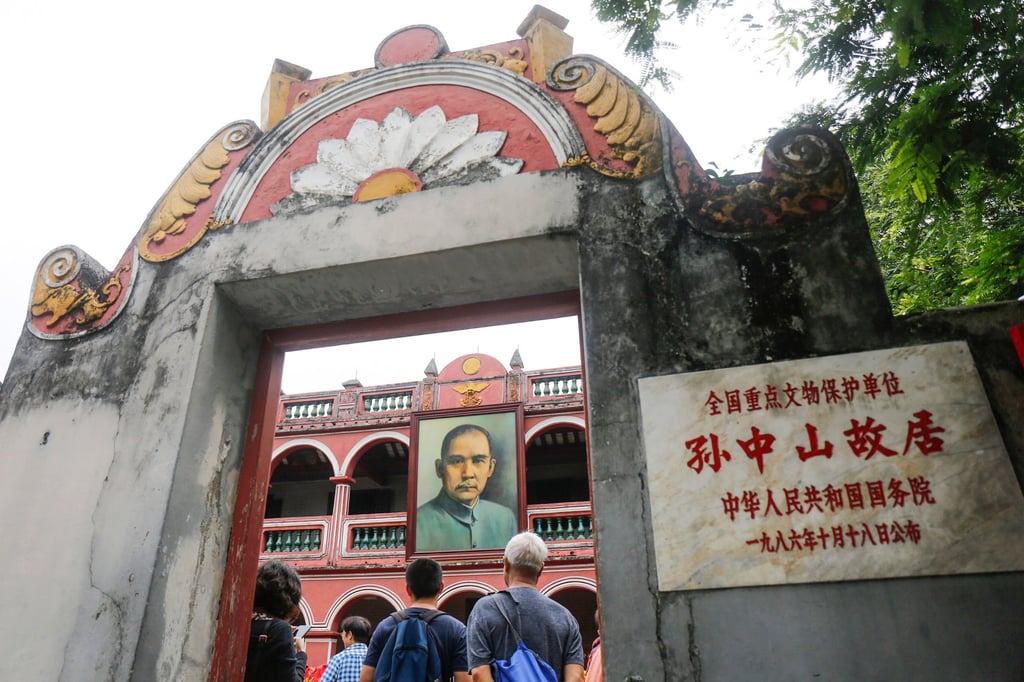
Establishing a new pivot for the integrated development of the east and west banks of the Pearl River Estuary, Zhongshan is paving the way for the high-quality development of the GBA.
-
GDP in 2023: ↑5.6 per cent
-
Total output value of industrial enterprises above the designated size: ↑6.1 per cent
-
Industrial investment: ↑47.3 per cent
-
To build the 66-sq km Shenzhen-Zhongshan Economic Cooperation Zone
-
633 government services available for both Shenzhen and Zhongshan residents
-
Started the construction of the Nansha-Zhongshan intercity railway
-
The mainline of the Shenzhen-Zhongshan Link connected
-
Accelerated the building of large-scale industrial areas and 10 themed industrial parks at the provincial level
-
Initiated 329 projects
-
New land released: over 90 per cent
-
New loans in the manufacturing sector: nearly 40 per cent
-
Established the “1+1+N” innovation and start-up platform for Hong Kong and Macau youth
-
Incubated over 110 Hong Kong start-ups
-
Total tech R&D expenditure: over 10 billion yuan, ↑24.1 per cent
-
Hi-tech enterprises: over 2,800
-
Hi-tech SMEs: over 3,000